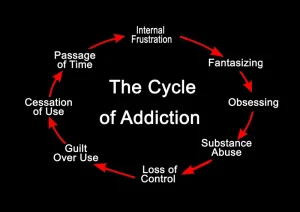
Medical professionals can provide comprehensive treatment plans that address the complex needs of those with end-stage alcoholism. These plans often include detoxification, medication, therapy, and support for co-occurring mental health conditions. Due to the high risk of complications like alcohol withdrawal syndrome, which can be fatal, treatment in a medically supervised setting is often required.

Late-Stage Alcoholism
The primary symptoms of stage three include high tolerance to alcohol, physical symptoms, and more obvious drinking behaviors. The middle stage of alcoholism https://ecosoberhouse.com/article/5-stages-of-alcoholism/ is when drinking interferes with everyday life. Sometimes people in this stage do show up for addiction treatment, but it’s not by their own volition.
Is there treatment for early-stage alcoholism?
Take our short (it takes less than 5 minutes) questionnaire based on the DSM-5 criteria to assess the severity of your alcohol use. Blacking out from drinking too much is a warning sign of this stage, along with lying about drinking, drinking excessively, and thinking obsessively about drinking. For those 5 stages of drinking who need help right away, WebMD Connect to Care specialists are standing by to get you started on the road to recovery today. In addition, medications may be able to help ease or stop drinking and guard against relapses. They are peer-led organizations dedicated to helping each other remain sober.
Long-Term Health Problems Associated with Chronic Heavy Drinking
Early withdrawal symptoms include headaches, anxiety, nausea, irritability and shaking. As the disease progresses to the middle stage, drinking continues to increase and dependency develops. Strong cravings for alcohol are typical at this stage, and drinking isn’t just for enjoyment anymore. Because the body has adapted to deal with an alcohol-rich environment, the alcoholic physically needs it to avoid the painful symptoms of withdrawal. These medicines can help reduce the negative side effects of detoxification and withdrawal.
I’m Seeking Help

When alcohol enters the bloodstream, one of the central impacts is slowing the rate of communication between nerve cells. The rate of communication returns to its typical levels once alcohol leaves the body. If a person drinks frequently or more heavily, the nerve cells in the brain adapt by reducing the number of places they can receive these messages.
- Identifying problems with alcohol early can help prevent dependence and addiction.
- You may start to feel sick from heavy drinking, but enjoy its effects too much to care.
- Unfortunately, individuals who are addicted to alcohol are at an increased risk of suicide due to severe depression and anxiety.
- As these changes persist even after zero alcohol intake, the risk of relapse is present.
During this stage, alcohol consumption is typically moderate and infrequent, often in social or celebratory settings. The severity of early-stage alcoholism varies widely among individuals but generally increases over time. It doesn’t start causing harm until it results in frequent intoxication or withdrawal symptoms. Typically, people in the first stage of alcoholism do not notice the harmful effects of alcohol because they’re not experiencing withdrawal symptoms. They may use alcohol to relieve stress but also enjoy being high or drunk. While end-stage alcoholism is a dire situation, it’s not a hopeless one.
- Alcoholics may even lie and blame others, rather than their addiction, for their problems.
- Middle-stage alcoholics may become irritable or angry if confronted about their drinking.
- In their book “Changing for Good,” psychologists James Prochaska, John Norcross and Carlo DiClemente warn that those who “cut short the preparation stage” are more likely to fail.
- With the combination of professional alcoholism treatment and sobriety maintenance, recovery is possible for anyone.
- Knowing the signs and symptoms of each stage can aid you in seeking help before your problem turns into dependence and addiction.
- If you try to give it up, your brain lets you know in a hurry that it is not happy.
- This stage of alcoholism starts when people experience an increasing tolerance to alcohol and raise their alcohol intake with greater frequency and quantity.
- The alcoholic is sober and has no cravings for alcohol, and there is no threat of relapse.
- They are best for people who have a high motivation to recover but cannot leave their responsibilities at home, work, or school.
- During this stage, individuals may engage in social drinking or experiment with alcohol.
Understanding the Chronic Stage of Alcoholism
